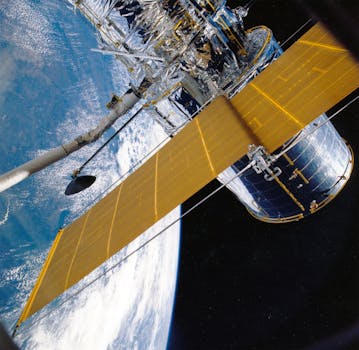GEO Satellites: Unlocking the Power of Geostationary Orbit
GEO satellites, or Geostationary Orbit satellites, are a type of satellite that orbits the Earth at an altitude of approximately 36,000 kilometers, remaining stationary relative to a fixed point on the planet. This unique characteristic allows GEO satellites to provide continuous coverage of a specific region, making them ideal for a variety of applications, including telecommunications, weather forecasting, and Earth observation.
At the beginning of our discussion on GEO satellites, it’s essential to understand the fundamental principles behind geostationary orbit. The concept of geostationary orbit was first proposed by science fiction writer Arthur C. Clarke in 1945, and the first GEO satellite, Syncom 2, was launched in 1963. Since then, hundreds of GEO satellites have been launched, providing a wide range of services and benefits to people around the world.
Applications of GEO Satellites
GEO satellites have a wide range of applications, including telecommunications, broadcasting, weather forecasting, and Earth observation. In the field of telecommunications, GEO satellites are used to provide internet connectivity, voice communications, and data transmission services to remote and underserved areas. They are also used to broadcast television channels and radio programs, providing entertainment and information to people around the world.
In addition to telecommunications and broadcasting, GEO satellites are also used for weather forecasting and Earth observation. They are equipped with sophisticated sensors and cameras that can monitor the Earth’s weather patterns, track natural disasters, and provide valuable data on the planet’s climate and environment. This information is essential for predicting weather patterns, monitoring climate change, and mitigating the effects of natural disasters.
Benefits of GEO Satellites
The benefits of GEO satellites are numerous and varied. One of the most significant advantages of GEO satellites is their ability to provide continuous coverage of a specific region. This makes them ideal for applications that require real-time data transmission and reception, such as telecommunications and weather forecasting. GEO satellites are also relatively low-cost compared to other types of satellites, making them an attractive option for organizations and governments that need to establish a presence in space.
Another benefit of GEO satellites is their long lifespan. With a typical lifespan of 15 years or more, GEO satellites can provide decades of service, making them a reliable and cost-effective option for a wide range of applications. Additionally, GEO satellites are relatively easy to launch and deploy, with many launch vehicles and deployment systems available to support their launch and operation.
Challenges and Limitations of GEO Satellites
Despite the many benefits and applications of GEO satellites, there are also several challenges and limitations associated with their use. One of the most significant challenges is the risk of congestion in the geostationary orbit. With hundreds of satellites operating in the same orbit, there is a risk of interference and collisions, which can disrupt services and cause significant economic losses.
Another challenge facing GEO satellites is the issue of space debris. As the number of satellites in orbit increases, so does the amount of space debris, which can pose a significant risk to operational satellites and other space-based assets. Additionally, the increasing demand for GEO satellites has led to a shortage of available slots in the geostationary orbit, making it difficult for new satellites to be launched and deployed.
Future of GEO Satellites
Despite the challenges and limitations associated with GEO satellites, they are likely to remain a crucial part of modern satellite communications for the foreseeable future. With the increasing demand for satellite-based services, including telecommunications, broadcasting, and Earth observation, the need for GEO satellites will only continue to grow.
In recent years, there have been significant advancements in satellite technology, including the development of new propulsion systems, advanced sensors, and more efficient power systems. These advancements have made it possible to launch smaller, more efficient satellites that can provide a wide range of services at a lower cost. Additionally, the development of new launch vehicles and deployment systems has made it easier and more affordable to launch satellites into orbit.




